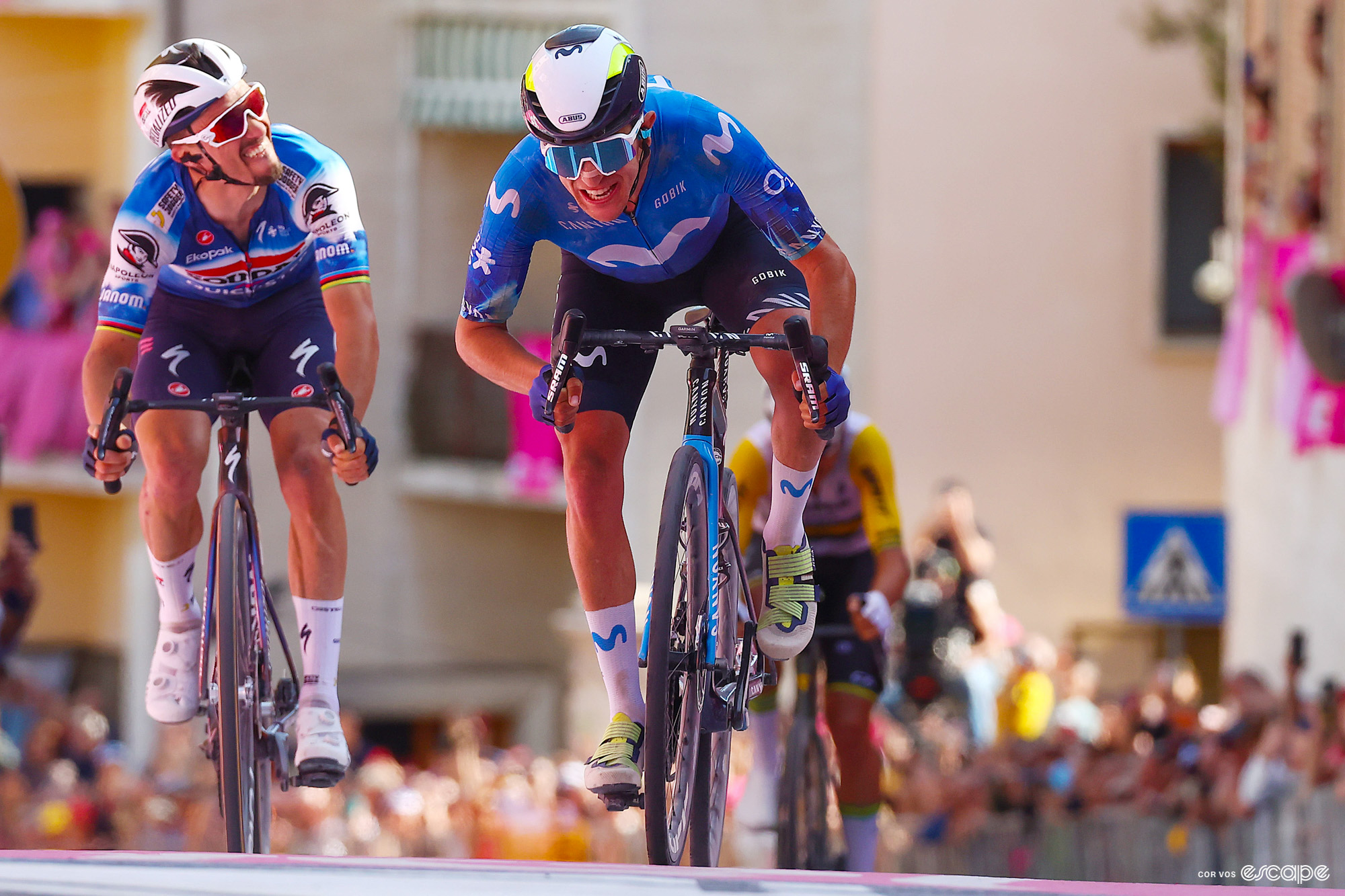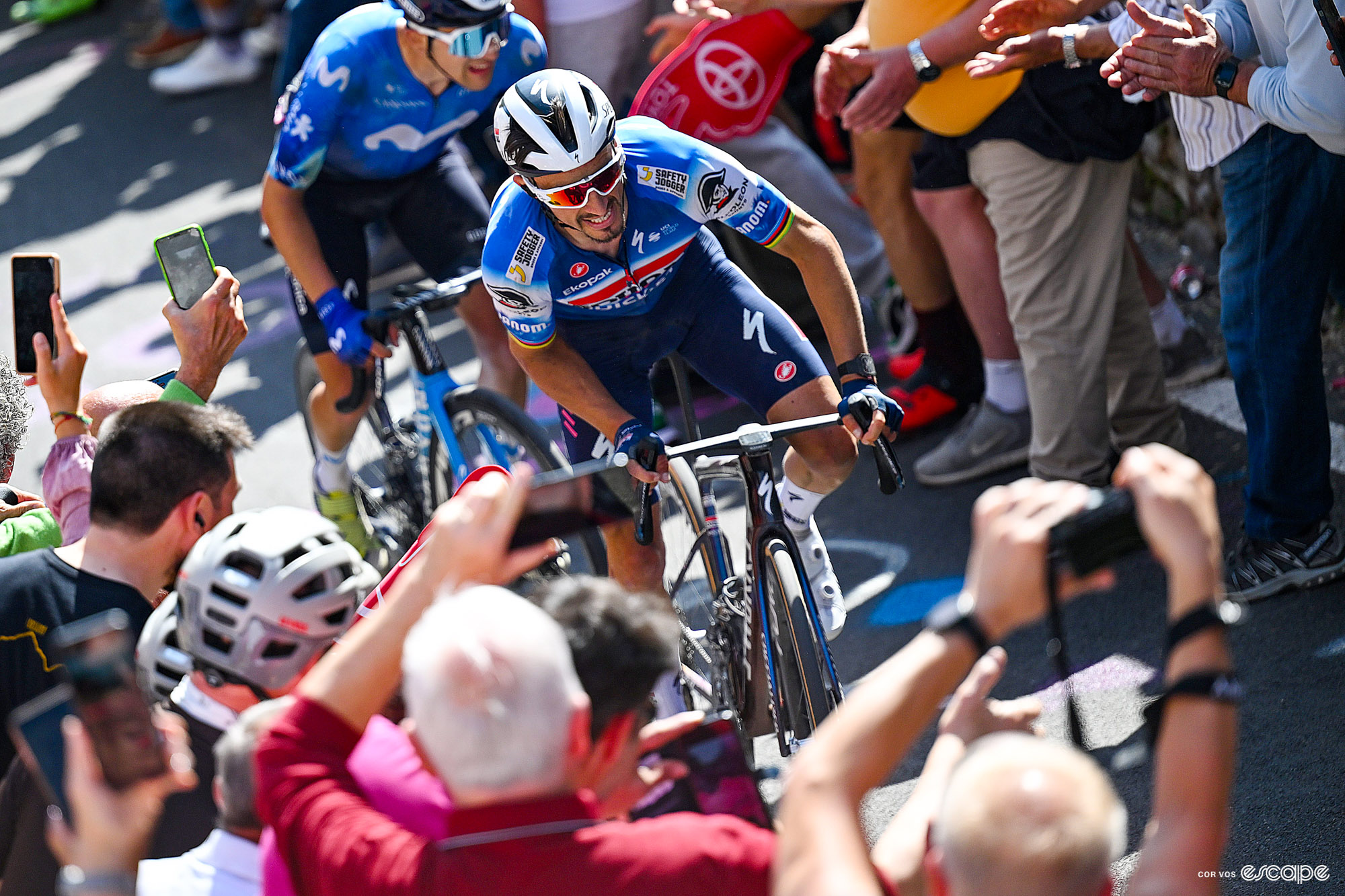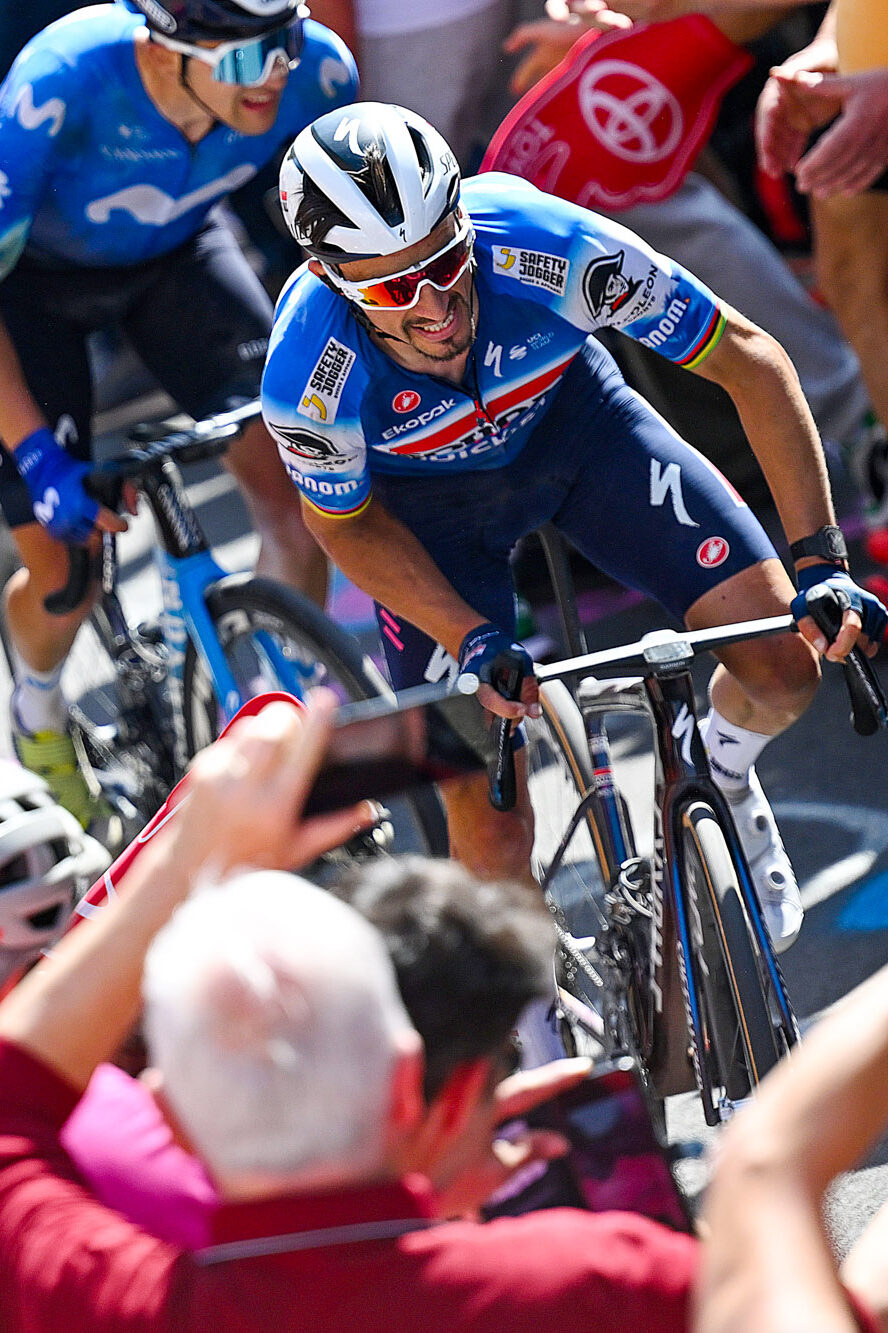There was a brief moment on Sunday, as the Giro d’Italia raced toward Napoli and its first rest day, where I believed that Julian Alaphilippe might do something remarkable. Something like the things he used to do. He launched on a short ramp with 25 kilometers to go, very much on his old zig-as-the-peloton-zags routine, refusing to maintain any sort of rhythm as he attacked off the front with a small group that was eventually whittled down to just young Frenchman Ewan Costiou. A rolling parcours, a charging peloton, and odds as long as Milan-San Remo. Perfect Loulou territory.
The remarkable would have to wait. Alaphilippe and Costiou were overhauled 10 kilometers later, quite easily. Jhonatan Narváez, who won a classic Alaphilippe stage to take the Giro’s first pink jersey a week and a half ago, came over top of the Frenchman and showed what a rider with both the prerequisite class and the benefits of youth can do. Alaphilippe, the great showman, had been reduced to an opening act.
“A victory would do me good,” he told l’Equipe on Monday’s rest day. It would do all of us good, I think. I’ve been overly focused on his exploits this month because it would arrest the slide he’s been on since 2022, down the wrong side of his professional bell curve and into the oblivion of a second-rate French team. It cannot happen, not yet.
Even at his best, Alaphilippe rarely won commandingly. Nothing ever looked easy, or was done the easy way. Dig out some old clips of him off the front and watch them closely: where many of the strongest riders appear methodical, almost comfortable as they shed those around them, Alaphilippe exudes turmoil. It’s like he forgets what he’s supposed to be doing, then remembers, accelerates, goes a bit too hard, settles in, cracks slightly, shakes his head, recovers, accelerates again. Repeat.
There might be a physiological explanation for this (his ability to recover quickly from hard efforts has always been a key attribute) but equally plausible is a blanket refusal to acknowledge the concept of a threshold, and the de facto limitations such a number imposes on an athlete. He does what he can do.
It worked before, and in particular in the 2018 to 2020 seasons that saw him take most of his major victories, because he could do so much more than he should have been able to.

If there is a day that summarizes him in my mind, and which I think he might point to as a sort of culmination of who he is as a bike racer, it is the third stage of the 2019 Tour de France. It was a hot day into Épernay, along streets shining with the gleam of Champagne money. The route rose up and fell down the sort of steep hillsides that make for good wine and good racing. Fifteen kilometers out he went, on one of the steepest sections. By the top he had five seconds; by the top of the next, he had 20. The gap barely topped 30 but he refused to slow. Accelerate, gurn, fade, stand up and go again. One man against many. He pulled on the yellow jersey for his efforts.
It was not the most prestigious win – that must be one of the World Championships, or maybe Milan-San Remo. But it was one of those days that runs against the logic of pro cycling, and in doing so suggests a rare level of form or confidence or both. He lost the yellow jersey three days later and then grabbed it back two days after that. He won the time trial in Pau, for god’s sake. Remember that? What a time to be alive.
Five years on, the same moves have different outcomes. He has tried multiple times already this Giro. A near miss on stage 6, the Tuscan gravel day, was the closest he’s come, behind Movistar’s Pelayo Sánchez. “I had victory in mind but he was clever, fresher, stronger,” Alaphilippe said. Three adjectives that he used to claim in almost any group he found himself in.
It’s easy to sit here and say he should stop racing like this. The solo or small group mission, noble but doomed, is not the choice for a rider on the wrong side of his peak. But that’s only because we compare him to himself. What should not be underestimated is the strength it takes to even try; how hard it is to stay off the front on the strade bianche of stage 6 and try again on Sunday, forging ahead in a moment when much of the peloton was on its limit; how much closer his current level is to victory than it is to those at the back of the field, merely surviving. What’s the phrase so often used? Form is temporary, class is permanent. Alaphilippe will keep trying. What else can he do?
What did you think of this story?


